Owl Finch (Bicheno Finch): Bird Species Profile
The adorable Owl Finch (Taeniopygia bichenovii) is a small, long-tailed grass finch that hails from Australia. The Owl Finch’s characteristic black and white markings make it look a lot like a tiny owl. The Owl Finch might not be the most colorful finch, but its unique markings are striking and this finch has sweet and gregarious personality. The easy-to-keep Owl Finch can be a great choice for new bird owners.
Species Overview
Common Names: Owl Finch, Bicheno Finch, Bicheno’s Finch, Double-Barred Finch, Double-Bar Finch
Scientific Name: Taeniopygia bichenovii
Adult Size: 3 to 4 inches long. About 15 to 17 grams (half an ounce)
Life Expectancy: Up to 10 years
Origin and History
The Owl Finch is part of a large family of birds known as waxbill, or Estrildid finches. The Estrildidae family is comprised of more than 130 species, including the Owl Finch. Other finches in the Estrildidae family include the Gouldian Finch and the Zebra Finch. In the wild, Owl Finches are found in Australia’s woodlands, grasslands and scrublands, where they live in groups.
Temperament
Playful and curious, the Owl Finch is a charming and entertaining bird to keep. Although highly social with other finches, the Owl Finch in not big on being handled by humans, preferring the close company of other birds. Keeping just one Owl Finch is not recommended. Like most finches, the Owl Finch does better when housed in groups of Owl Fiches in large enclosures, or at the very least, a pair of Owl Finches in a smaller enclosure. Owl Finches can also be kept with other finches in the same family, as well as canaries.
Owl Finches will readily breed if you keep males and females together. If you prefer not to have baby Owl Finches, you might try to keep all females. However, telling male and female Owl Finches apart is not always an easy task (read more about sexing Owl Finches below under “Owl Finch Colors and Markings”).
Speech and Vocalizations
Owl Finches are quite vocal, chattering the day away. A group of Owl Finches can be somewhat noisy, though the vocalizations are more pleasant than earsplitting. Only the male Owl Finches sing, but they do less frequently than some other finches.
Owl Finch Colors and Markings
The body of the Owl Finch is light brown. It has dark brown wings with tiny white spots, and a white face and chest and belly. A black band circles around the white face and a similar black band appears below the chest. It’s Owl Finch’s beak is a beautiful silver-gray and the eyes are black. All together, the markings call to mind those of an owl, lending to one of the breed’s common names.
Male and female Owl Finches look nearly identical, although females might have slightly narrower bands and their chests may be less brilliant white. Such differences are subtle, though, so it’s nearly impossible to determine sex based on coloring alone. However, there is a telltale giveaway about the sex of an Owl Finch: Only male Owl Finches sing.
Caring for the Owl Finch
The Owl Finch is an active species, so it should be housed in a much larger cage than you might expect given its small size. The Owl Finch needs plenty of space to fly around. A large enclosure (at least 2 to 3 three feet—the longer the better) is especially important when keeping two Owl Finches, as is generally recommended. If you’re planning on keeping a larger group of birds, bump up your enclosure to an aviary or flight cage.
Provide several perches and a woven nest basket or box nest with appropriate nesting material like dry grass or shredded paper. You can also include some toys or ladders in the enclosure, but avoid too much excess clutter in the cage, which takes away space for flying about.
Keep your enclosure in a warm room free from both direct sunlight and drafts. Make sure the room is warm enough for your Owl Finches—a minimum of 60 degrees Fahrenheit.
Common Health Problems
Like most finches, the Owl Finch may be prone to developing air-sac mite infection, a parasitic infection common in birds. Air-sac mite infections affect the respiratory tract. They are very serious, requiring immediate treatment by a veterinarian. Owl Finches are also prone to developing scaly face, another disease involving mites. As with air-sac mites, veterinary treatment is required for scaly face. Finally, Owl Finches may experience egg binding, when a female bird is unable to pass an egg, which can make the bird very sick. Egg binding is common in smaller birds like finches, although it can occur in any bird.
Diet and Nutrition
Feed your Owl Finches both high-quality finch seed and a finch pellet food, and supplement with fresh greens, such as spinach, and broccoli tops and carrot tops, and mealworms or grubs for protein. Provide a cuttlebone for calcium and a hanging water bottle (clean and change the water daily).
Exercise
Because they do not especially enjoy handling, Owl Finches generally stay in their enclosures. They are active flyers and will get plenty of exercise inside their cage as long as it’s large enough. Avoid tall, narrow cages, which don’t provide enough horizontal space for flying.
Easy to care for
Unique “owl-like” look
Active and entertaining pets
Do not enjoy handling
Require large enclosures for flying
Can be somewhat noisy (chattering)
Where to Adopt or Buy an Owl Finch
Owl Finches are often available for sale in pet stores and bird specialty stores. You can also buy Owl Finches from a breeder. Always do your research to ensure the breeder you’re interested in buying from is knowledgeable and raises healthy birds in a humane environment. Some bird rescues and even your local animal shelter might also have Owl Finches available for adoption.
More Pet Bird Species and Further Research
If you like the Owl Finch, you might also be interested in similar species, including the following finches:
· Java Finch Species Profile
· Gouldian Finch Specie Profile
· Zebra Finch Species Profile
Otherwise, check out all of our other small bird breed profiles.
RECOMMENDED NEWS
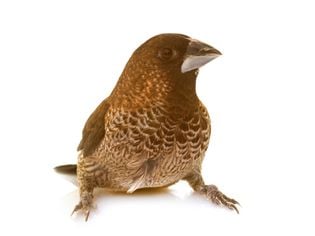
Society Finch: Bird Species Profile
Society finches are not the kind of bird that one would choose if they want an avian friend that ta...
Read More →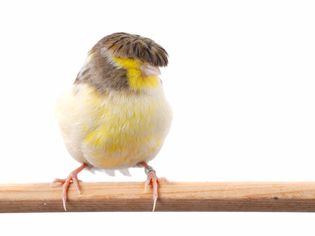
Gloster Canary: Bird Species Profile
Gloster canaries are small birds that are bred for their shape instead of their colors or song. The...
Read More →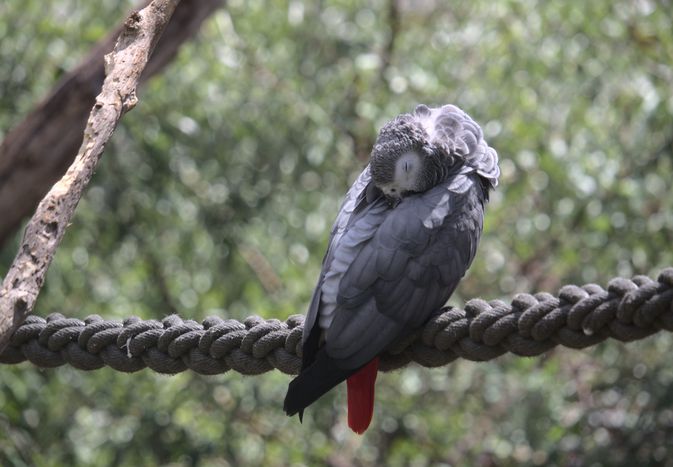
How Do Birds Sleep?
Most animals, including humans, natually lie down on their backs, sides, or even stomachs when they...
Read More →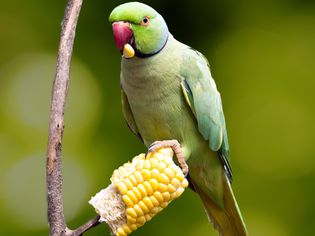
Safe Vegetables for Pet Birds to Eat
Many of us have heard about how important it is to eat plenty of vegetables throughout our lives, a...
Read More →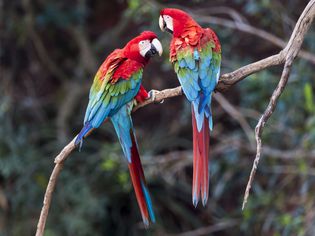
Harlequin Macaw: Bird Species Profile
The harlequin macaw is a beautiful, popular hybrid parrot that makes an excellent pet for the right...
Read More →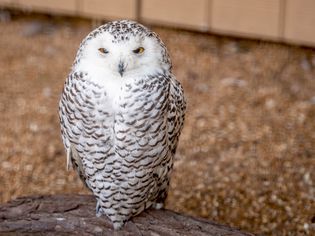
Should You Keep a Snowy Owl as a Pet?
Some blame the fictional Harry Potter and his snowy owl sidekick, Hedwig, for giving a false impres...
Read More →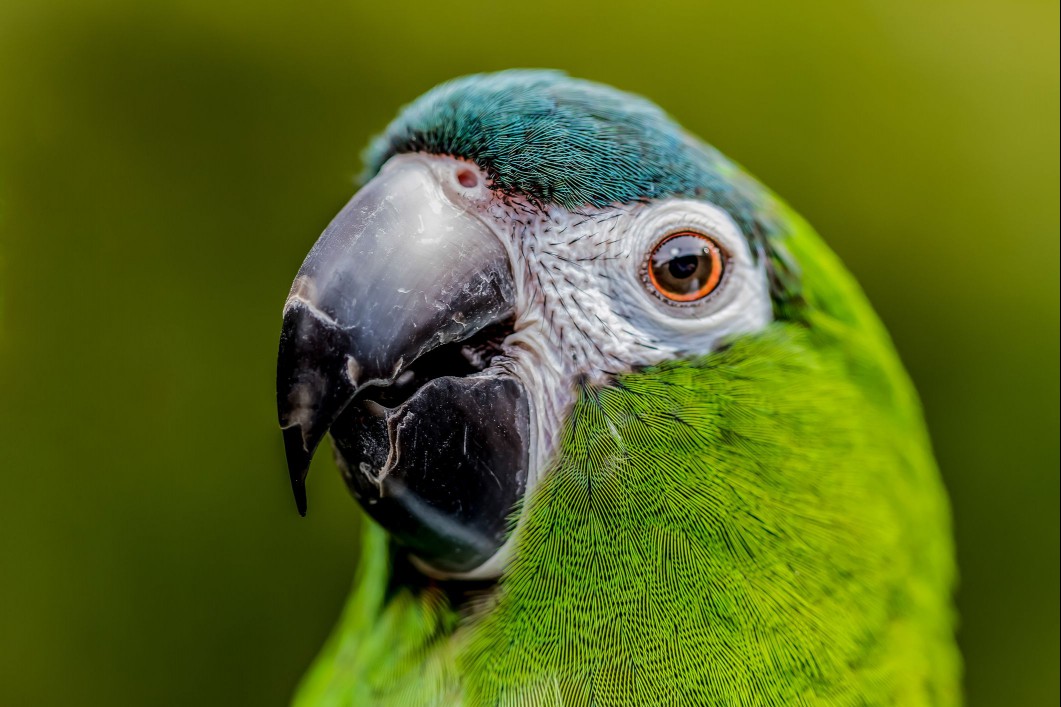
Hahn's Macaw (Red-Shouldered Macaw): Bird Species Profile
Hahn's macaws are the smallest and the most popular among the miniature macaws. These compact ...
Read More →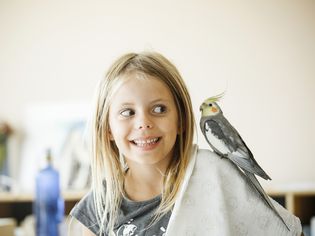
These 7 Birds Make the Best Pets for Kids
If your child has asked you for a pet with wings, there are many factors to consider before bringin...
Read More →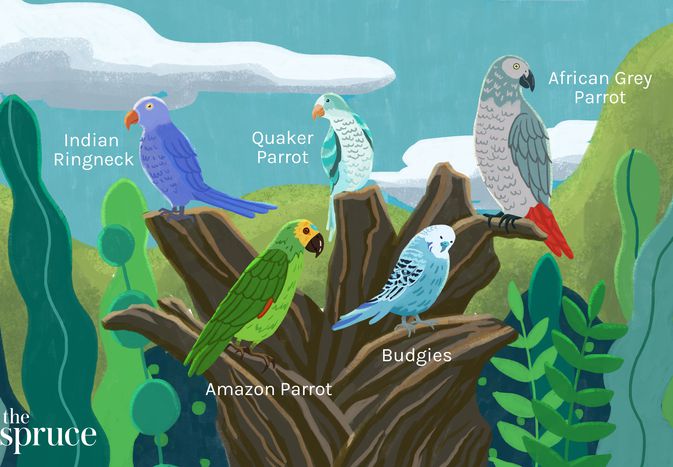
8 Best Talking Birds to Keep as Pets
Talking birds are popular pets because they can mimic human speech or even perform tricks. While so...
Read More →
Comments on "Owl Finch (Bicheno Finch): Bird Species Profile" :